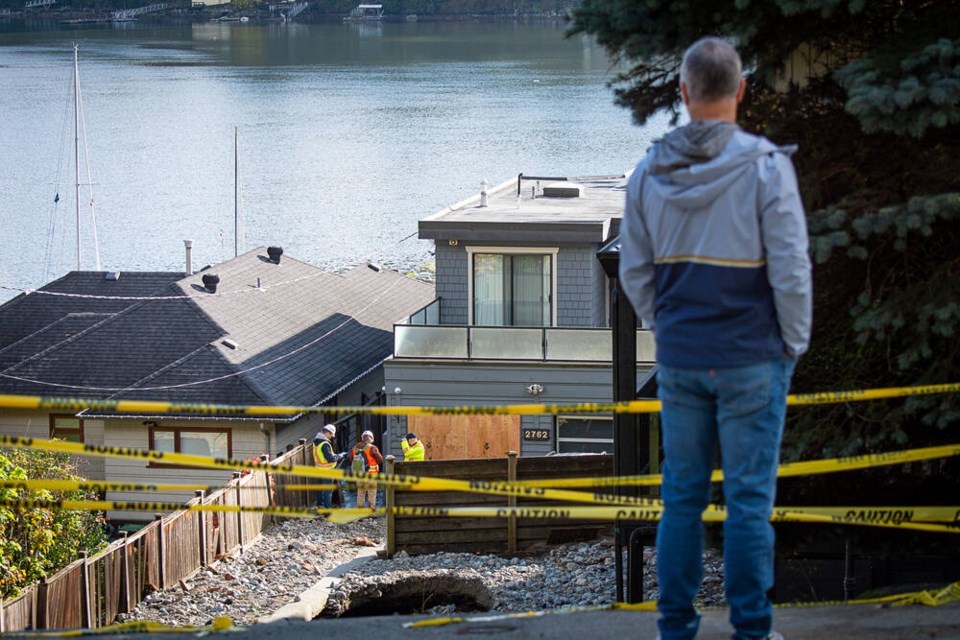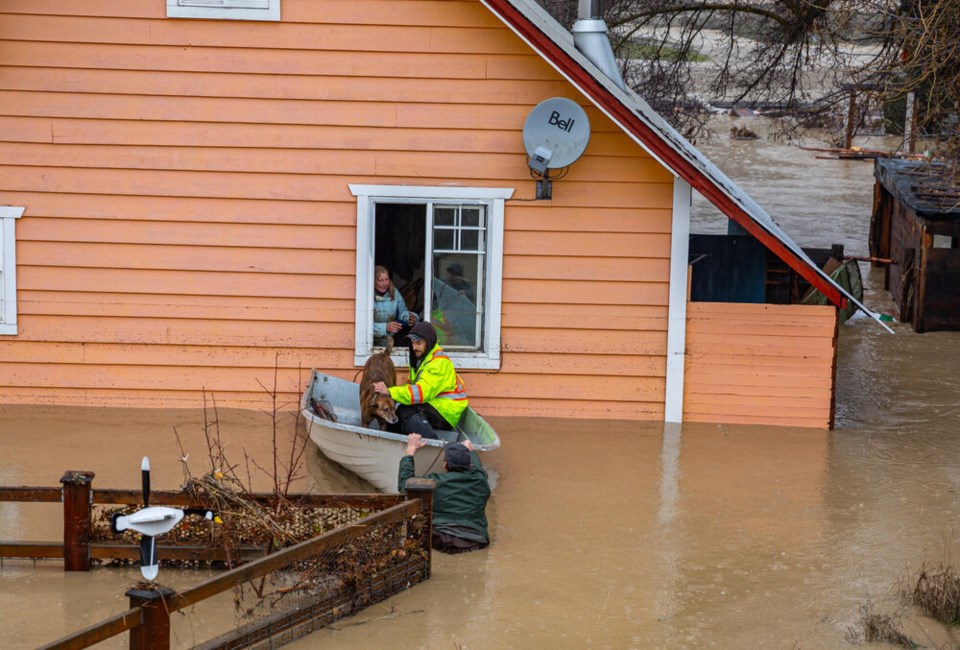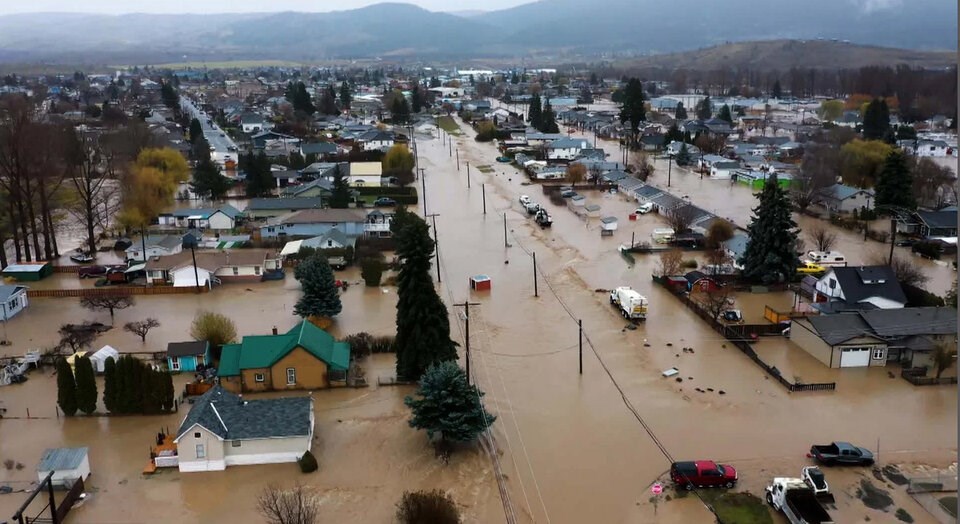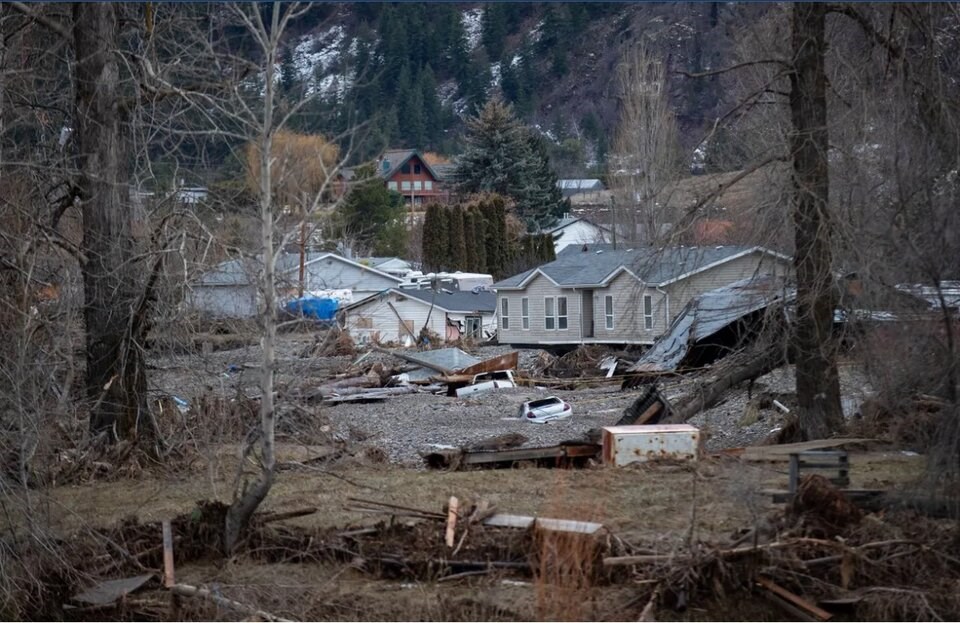A new federal program designed to finance reconstruction after disaster will now offer money to individuals and municipalities looking to protect — or even buy out entirely — properties before wildfire or floods strike.
For individuals, that could mean getting money for new siding to protect a home from wildfire, or changes to a house’s foundations to fortify it against flooding.
For municipalities, it might mean money to build up dikes or buy out at-risk homes from their owners.
But the measures don’t kick in until this spring, and some British Columbians still coping with fallout from disaster years later say they have been left behind.
Since it was created in 1970, the Disaster Financial Assistance Arrangements program has sent $8.5 billion to provinces to help residents rebuild from 283 disasters.
A third of that money has been paid out over the past 15 years, and about a quarter went to B.C. — a province increasingly facing outsized risk from wildfire and floods.
By 2030, the construction of new homes in high-risk areas across Canada is expected to leave B.C. with up to 95 per cent of the country’s climbing wildfire bill and half of its spiking flood costs, according to a recent report from the Canadian Climate Institute.
In the worst-case scenario, that could leave the province with another $2.2 billion in damages a year, the report found.
Paul Kovacs, executive director of the Institute for Catastrophic Loss Reduction, said the latest federal disaster financing program helps answer that threat.
“The only way to really solve the problem is to invest in protection,” Kovacs said. “This is transformational.”

Under the new program, the federal government will cover 90 per cent of provinces’ costs for post-disaster mitigation in high-risk areas, and half the costs in non-high-risk areas.
In areas most at risk of repeated disaster, jurisdictions can use the money to buy out uninsured homeowners so they can move somewhere safer.
Welcomed by some, the overhauled disaster financing program has frustrated several B.C. homeowners and cities that are still trying to find ways to pay for past disasters.
One of the province’s costliest recent disasters came in 2021, when a powerful atmospheric river slammed into B.C., knocking out roads and bridges, and causing billions of dollars in damage.
In Merritt, the Coldwater River swelled, bursting the city’s dikes and swamping 640 houses in an emergency that forced the evacuation of all 7,000 residents.
In the years since, Merritt has struggled to fund the reconstruction of its flood defences. Protecting the city from future floods requires raising the dikes beyond their previous height. But those improvements aren’t covered under the old disaster assistance program, and the new “build back better” funding only applies to events that occur after the program launches on April 1.
Sean Strang, the city’s director of recovery and mitigation, said the municipality has spent significant time and money advising on the program’s creation, only to learn later that the 2021 flood damage in Merritt, Princeton and Abbotsford would not be covered.
“Merritt helped them build the bus and we don’t have a seat on it,” said Strang. “It’s frankly a slap in the face.”
Cities left behind
By June 2024, Merritt, Abbotsford and Princeton still had not received funds needed to rebuild flood protections.
That month, mayors from the three communities held a joint press conference where they slammed the federal government for failing to explain why they had been denied funding from the Disaster Mitigation and Adaptation Fund. As Merritt Mayor Michael Goetz said at the time, the cities were “ghosted.”
“They did not return any calls. They did not return any emails. They returned nothing,” he said.
B.C.’s Minister of Emergency Management and Climate Readiness Kelly Greene said she welcomed the improvements to the federal transfers, but the province continues to call on the federal government to support communities like Abbotsford, Merritt and Princeton in their recovery “as previously promised.”
Tom Davidson remembers when the dikes that were supposed to protect Princeton failed. Waters from the Tulameen and Similkameen rivers rushed down half the streets in town, swallowing up his truck.
“We took seven feet of water in the street in front of our house,” said the local museum operator.

Davidson, whose damage wasn’t covered by insurance, said it has since cost him about $100,000 to rebuild his home. B.C.’s old federally backed disaster financial assistance program covered almost half of that, something he said was “minimalistic” but fair according to the terms of the program.
Davidson received help from the Red Cross and a group of Mennonite volunteers. Even then, the rebuilding wiped out his savings.
Engineering assessments now place the whole lower part of the town of 3,000 people in a flood plain, including Davidson’s still unfinished home.
Like many in the town, he’s still in recovery mode. “There’s still people that are hurting from it,” Davidson said.
The Princeton resident was among about 2,000 people who submitted disaster financial assistance applications to the province after the 2021 floods.
A B.C. Ombudsman investigation looking into that year’s floods and wildfires later found government responses were “outdated” and “unfair.”
Among its many findings, the 2023 report found application delays for disaster financial assistance were “unreasonable,” with the appeals process not open to applicants until almost a year after the disaster.
Application denied
Those delays are all too familiar for Davidson’s neighbour, Sam Perera, who bought his house less than a month before the floods hit.
A former TransLink bus driver, the 52-year-old said he had fled the city to find cheaper housing, looking everywhere from Vancouver Island to Kelowna. The riverside town was the only place he could afford property, and after buying the house Oct. 15, 2021, he began renovations to make the old home livable.
A month later, Perera was in Vancouver picking up flooring when the flooding began. When the roads opened days later, he returned to find his refrigerator had floated across the kitchen. The washer and dryer were flipped upside down.
Perera, whose damage was also not covered by insurance, said he immediately started fixing it, using his own savings and taking out a bank loan. Amid the financial chaos, he had failed to change the address on his driver’s licence, an oversight he says led the province to deny him disaster financial assistance in the years since.
A spokesperson for the B.C. government said it is updating how it distributes disaster recovery funds. That includes a new easier-to-access online application portal; expanded eligibility for small businesses and corporation-owned principal residences; and increasing the limit recipients can receive to $400,000, up from $300,000.
It’s not clear how those changes would help someone in Perera’s position. Now an equipment operator at Copper Mountain mine, he said he’s still paying off his loans.
Given the chance, Perera said he would jump at a government offer to buy out his home, partly because he could never afford to rebuild again should floodwaters return.
“When I bought the house, I never knew about climate change and all that stuff,” he said. “Now, I would take the money and I would go.”
Merritt's plan to protect city could offer model for B.C.
Merritt’s $150-million plan to protect the city hinges on 30 properties that stand in the way of a new dike. Without that wall, more than 1,274 homes will continue to sit in an unprotected flood zone, said Strand.
Engineers estimate the dikes need to be raised up to three metres higher to adhere to provincial standards and ward off a one-in-200-year-flood made worse by climate change.
To make the structure stable, flood defences need to be three times thicker than they are tall. The expanded footprint places the dike directly on top dozens of existing backyards and houses — many of which were built in the early 1900s before flood protections existed.
Strand says that while some of those homes have been damaged and abandoned, others are still occupied.
“It’s problematic,” said Strand. “Generally, when you drop a load of rip rap in someone’s living room, they kind of get testy about that.”
For the last two and a half years, the planner said he has been trying to find an equitable way to buy out homeowners that doesn’t scare off the province.
Late last month, the city wrapped up a pilot buy-back program that involved four properties and was partially funded by the province. Once a purchase offer is accepted, the four-phase plan includes removing the damaged structures and working with the region’s six First Nations to reclaim the site as a natural area that can absorb floodwaters or as a platform to build defences.
This month, Strand said the city will submit an engineering report to the province detailing how their buyout plan could be scaled up to cover the 30 properties in the way of the new dike, as well as expanded to other communities.

This isn’t the first time the province has been asked to fund buyouts in the face of floods. A $50-million federal and provincial spending package to help the City of Grand Forks recover from floods in 2018 led the town to buy out 70 residential properties, a mobile home park, 20 vacant parcels and 23 statutory rights of way, according to data provided by the B.C. government.
In many cases, Strand said the province paid homeowners the value of the properties after they were flooded. For some, it wasn’t enough for the homeowners to pay off their mortgages.
Merritt’s plan is to ensure primary homeowners get enough money to buy an average home in the city without creating exorbitant costs for government. The program is designed to be scalable and adjusted to local land values.
“We made this in Merritt,” said Strand. “But it can be applied in other jurisdiction if the province chooses.”
The city estimates it will cost $18 million to buy out the properties standing in the way of a new dike. It’s a large sum of money, but a return-on-investment analysis found that every $1 invested in flood protection would avoid at least $7 in emergency response and rebuilding costs later.
Strand said the only alternative is the city goes on without adequate flood protection, waiting for the next big storm.
“We get nothing if we don’t get the land,” he said. “It’s an absurd proposition.”




